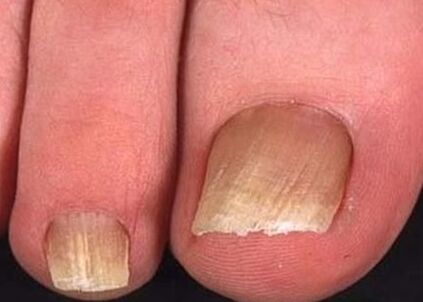
Healthy nails should look good - to be smooth and even.The color should be yellow or slightly pink, caused by the presence of blood vessels beneath it.When a defect appears, the nail may lose its normal color, darkening or painted in different colors.As the thickness changes, the nails become messy and look sloppy.In some diseases, the nail plate can be defective until they lose them.
Development malformation can be congenital and acquired.In the first case, this is caused by damage to the nail ectoderm-fabric-pursor.It looks like a nail deformation or its absence immediately after the birth of a child.
Vices obtained can grow for a variety of reasons.The most common problem is fungus, which in one form or another present in every third person.The fungus is not only external, where only the plate is affected, but also by the interior - the finger can be influenced by the subsequent destruction.
In addition, such diseases can lead to step -deformation steps:
- Psoriasis - with this pathology, the thickness of the nail change.It becomes more compact than normal and unpleasant to touch.In addition, pain develops - on palpation, discomfort is felt.Color -colored places grow under the plate - from red to purple - this shows bleeding.When the infection is consolidated, the suppuration with the hematoma under the nail can be observed.Local detachment from the skin can be observed - the shape of the cavity in these places that gives their hands look messy.Further development of the disease can cause onycholysis.
- Eczema is often accompanied not only by local defeat, but also in general.That is, in addition to damage to the plate, skin symptoms can also be observed.Eczema is indicated by changes in the nail roller and plate directly.Fingerprints become swollen, peeling can develop.Itching -contact the affected surface and pain.At the same time, the nails become dull and pale, their stratification or tenderness is possible.
In addition to these reasons, deformation can be provoked by nail plate fungal infections.
Fungus is a disease that, with a negligent attitude, can lead to complete destruction of the plate.In the early stages, this was only indicated by color and thickening changes, in the end, defeat led to the loss of nail plate.
Signs -to infection with fungus
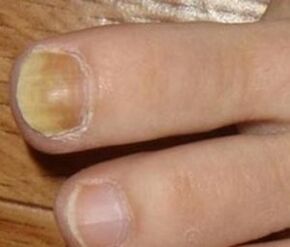
When infections with onychomycosis, there is no pain and intensive defects - therefore, people often choose not to realize it.In addition, the fungus was initially not indicated by the changes stated in the nail plate and it was difficult to distinguish.
First of all, itching -the scalp appears.It is intense and can distract from work or rest.It is caused by the spread of microorganisms in the dermis, which is seen by the body as irritation.With persistent itching, one may be disturbed by sleep and appetite.When brushing the skin, it may bring bacteria into the microcracks, so the intrusion of secondary infections will develop.
If the treatment steps are not taken, then organic changes in the nails and tissues occur.The plate becomes muddy and opaque, the spots and the stripes grow on it, which can be light and dark - it depends on the pathogen.
Changes under the shade indicate that yeast fungus completely captures the plate tissue.Usually the color becomes yellow, but brown and white can also occur.
Nail softness and fragility also show the fungal process.At the same time, the nails are divided, becoming messy.Because of this, painful ingrowths or dilution of nails from his bed in the event of an injury may occur.
If all these symptoms appear or at least one of them, you must consult your doctor about the treatment - without this, the disease can go into a chronic form.
The stage of development of infection
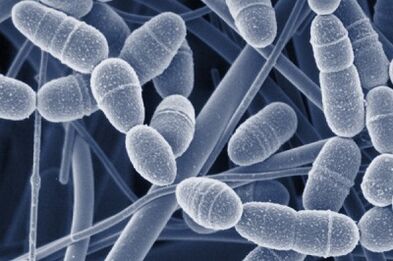
Unlike many pathologies, nail fungus is a slow disease.It is characterized by a gradual stream that is difficult to miss.Fungal therapy is effective in the early stages, so the earlier help is provided, the better.
Early stages are often visually not visually.Therefore, it is impossible to show how the nail fungus in the feet in the photo in the early stages is visible.But the first symptoms appear at this time.The anxious bell in relation to the fungus is an itchy skin, which is increasing throughout the day and achieves the biggest intensity at night.The only sign that can be subject to the idea of fungal infection is the appearance of nail pathology-this is characterized by the development of spots and strips from pale yellow to white shade.There may be dark areas.
Normotropic lesions are indicated by moderate symptoms.This is evidenced by the fact that the nails have not been thickened and the deformation is clearly not observed in it.However, the stains and strips are very different and look to others.In addition, the unpleasant odor that comes from the joining foot.If you do not start treatment, the disease will surely go to the last stage.
With hypertropic lesions, the thickening of not only the plate itself, but also the surrounding tissues are observed.This is reflected in the nail deformation, it can change the direction of growth, collapse and break even from a small effect.As a result, the nails can be reduced, in place in severe illness, the new plate does not grow.
With the presence of equivalent pathology, the transition from the first stage to the launch occurred very quickly, in just a few weeks.This can be due to the presence of immunodeficiency, cancer and weakness of the body, which develops in old age.
Injections in adults also trigger the development of the disease.This can be direct damage to the nails, as well as the surrounding tissues, when, due to lack of blood circulation, nail change metabolism.Currently, the ideal situation is created for fungus.
With obesity and diabetes mellitus, nail fungus in the feet develops in 95 cases out of 100. This is due to the fact that fungal microorganisms receive much needed for the growth and reproduction of materials - for example, glucose and lipids.Therefore, in such patients, pathology is very difficult.
Nail fungus when infected with dermatophytes
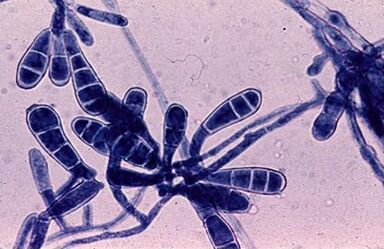
Dermatophytes are the most common causes of pathology.Interesting them is relatively easy - through regular towels, baths or interior slippers.
This type of fungus has two dangerous representatives - can cause fungal lesions - these are trichophyton rubrum and trichophyton mentagrophyphytes.
The first representative began to penetrate under the nail plate from its advantages, moving further.Signs of infection with this fungus - changes in the color of the nails on the feet with pink to yellow with black, the plate texture decreases - it becomes fragile and fragile, collapsing with physical exposure.
For the right diagnosis, you need to know how the nail fungus looks like.The most characteristic feature is the appearance of a nail detachment near the side.In this space, dirt accumulation occurs, which is profitable for the development of microorganisms.During this time, it is still possible to get rid of fungus without losing your nails, using only ointment and creams with antifungal pills.
There are so many distal forms of disease, which are indicated by the onset of lesions in the nail bed.This form is much more common, as to penetrate there, microorganisms are needed for entrances - microcrack or other damage.This condition is not uncommon after injury.With this option, it is necessary to remove the nail plate completely, as any conservative treatment is ineffective.
If the cause of the fungus is trichophyton mentagrophytes, then the signs of the disease will be as follows:
- thickening - there will be significant hypertrophy plates with the presence of deformation and fabric defects;
- The color of the plate becomes intensive yellow, with honey;
- Abscesses on the fingers near the nails appear;
- In the final stage, skin wounds also combine - in interdigital gaps, peeling and skin cracks are observed;
- The appearance of white stripes and spots -the spots develop -these are places where the most intensive parasite fungus;
- On the hand, this type of pathogen is never parasite.
To get rid of this fungus, it is necessary to undergo proper comprehensive treatment with both oral and local medicine -gel and ointment.
In severe cases, you may need to remove nail and laser cleaning to eliminate microorganisms.This method has many positive reviews.It is forbidden to use varnish.
Nail changes when infected with the genus fungus

The disease is characterized by damage not only to the tissues of the limbs, but also for localization of the brush.The main hand is more often affected, for example, the right hand is the right hand.From frequent contact with water, the disease is rapid.
The characteristic feature of this disease is damage to the nails from the box.Over time, more tissues are captured - the first of the cellular division zone, and then the free advantage.
With this disease, more often than others, secondary infections occur.Candidiasis is accompanied by pain in the roller and bed, on palpation it is possible to secrete serous or purulent release.
The nails are gradually defective and rise on the skin, the thickness can reach a few millimeters.At the same time, the nails become like waves, indicated by the presence of so -called shells that can go in different directions.However, with candidiasis, the most common form of nail damage is a horizontal spread.
In severe pathology, the nails are gradually separated from the nail bed, which is accompanied by discomfort and pain.In the event of accidental trauma such as nails, possibly, accompanied by significant bleeding.The surface of the wound in this case is delayed for a long time.
If the fungus affects the benefits of nails, then this is often combined with the skin or general form.It's called distal.The variation of the disease is more difficult and more difficult to treat.The distal form indicates that human immunity is weak and affected by microorganisms.
Candidiasis treatment varies in various forms and stages of the disease.Initially, you can try to affect microorganisms with the help of local ways, but in general or fast progressive forms, you need to take systemic oral drugs.In addition, if there are signs of widespread damage to the fungus, it is necessary to prescribe a complete medical examination to find a disease that has reduced the level of immunity.
Nail changes with mold damage
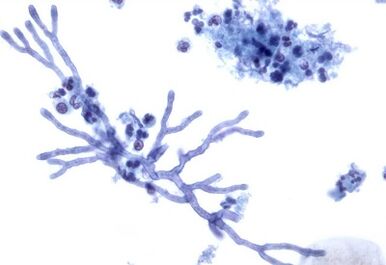
Defeat with mold mushrooms is less common than other pathogens.This is due to the fact that one does not often come in contact with this type of microorganism because of their specificity.Often, these mushrooms are infected with existing wound background.The most favorite colonies, the mold, are mentagrophytes trichophyton.Against this background, you can often see the effects of both mushrooms and bacteria.
The disease is a characteristic of the elderly.During this time, the decline in cell immunity and weakness of the body occurs, as mushrooms develop more intensively.
The characteristic feature of this pathogen is their selectivity.They do not affect the skin and soft tissues, locally exclusively on the nails.
Among the causative agents, most types of most found:
- Alternaria - this fungus determines the development of nail deformation and hyperkeratosis.To recover from the disease, it is necessary to remove the nail plate, as the microorganism is very deep into the tissue and it is difficult to remove it.
- Scytalidium is dimidiatum - often such microorganisms appear in diabetic patients.To get rid of such fungi, it is necessary to carefully monitor glucose levels in the blood and observed in line with the endocrinologist.
- Scopulariopsis Brevicaulis is more commonly found in public places, for example, in the bathroom, swimming pool, shower.When it is localized in the nail plate, there is a change in their color from pink to white.
- Fusarium is common in rural areas, it is a lot on the ground, from which it can easily switch to fabric.This fungus, when penetrating the body, can cause mycosis of the internal organs, which is very difficult to treat.Therapy for such a terrible disease should be done only in the hospital, as treatment is serious for the patient.
Mold damage therapy is very complicated, as it is necessary to treat the body from several colonies of microorganisms.To produce relatively high quality therapy, a combination of antibiotics and antifungal drugs is used.In severe cases, they are not oral administered, but intravenously.















